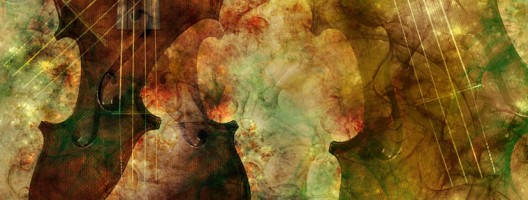Generally it is maintained that there are two distinct styles of music. Let us term these, for convenience’s sake as ‘Western’ music, music which originates from the Western society, and ‘Non-Western’, music which is derived from all other cultures, particularly those of the East and Africa. Western music is usually recognizable as ‘goal oriented music.’ This means to say, music that is narrative in structure, consisting of a series of progressive ‘events’, so to speak. The listener feels the progression of the music, and it evokes a sense of movement within him, it feels like the music has a destination and it takes the listener on its journey. Non-Western music is characterized by a prolongation of a single note, or a select group of sounds which continues in a set pattern throughout the entire melody. This type of music arouses a more contemplative state, evoking within the listener a sense of timelessness and inner space.
Appropriately these moods of music reflect the essential theology of these two civilizations. In the West the predominate belief is that creation began at a period of time, as time is linear, culminating in a future. Creation, revelation and finally redemption. Reflecting this reality the music the West produces follows this pattern, it begins, reaches a high point and climaxes. By contrast in the East, where time is viewed to be cyclical, with no ‘beginning’ middle or ‘end’ its music too is cyclical and repetitive.
The Kabbalah and Jewish mystical teachings, on some level meld these two together; yes, creation began at some point of time, and time itself was created, nonetheless creation is continuous, moment to moment anew. Nothing is merely in the past, or hoped for purely the future. Everything is within the eternal present. As such the music that the Jewish mystics produced, especially the songs of Chassidim known as niggunim are reflective of both these musical spectrum. There are some niggunim that are structured and progressive, these tunes are to the Western ear, ‘sophisticated’ tunes, consisting of a beginning, a body and a climax. There are other niggunim which are containments of a repetition of single, individual sounds with little or no words. And some contain the two.
Wherein Neitzsche suggested that the ‘fire magic of music’ is to be found in its anti-rationality, and what he sought in music was its ‘ecstatic irrationality’, the Jewish mystic looks to unveil within music its transcendence. Perhaps not the transcendence within the music itself, as some would argue that music is nothing more than “sonorous air†or, as Leibniz had it “unconscious arithmeticâ€, rather the reaction to the music, the transcendence reached as one reacts to the music.
A wordless tune, –as much of Jewish mystical particularly Chassidic song is, is the way two individuals can communicate on a soulular transcendent level. Any breakdown in the verbal communicated mode can be repaired by creating a conduit that transcends words. When a person feels alienated from his Source, or for that manner, from his fellow man, a wordless tune which exists on a realm that defies distinctions, separations, and disharmony, is the most fitting remedy, causing a unity of souls.







